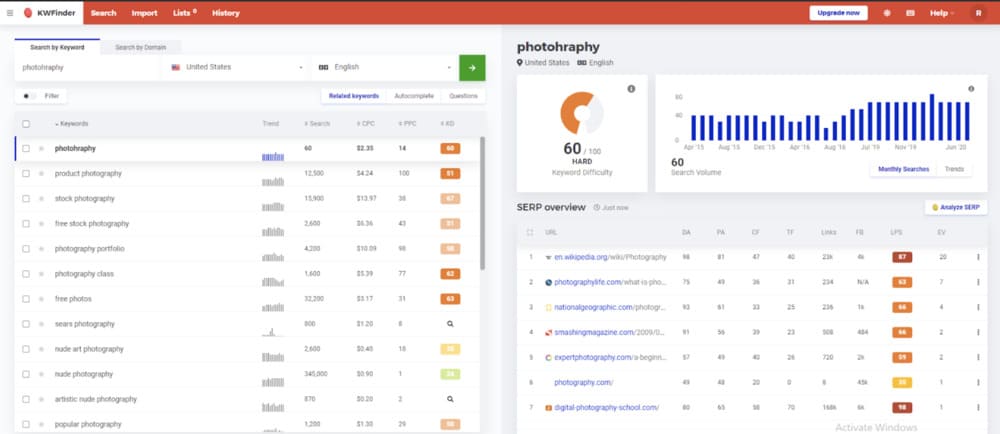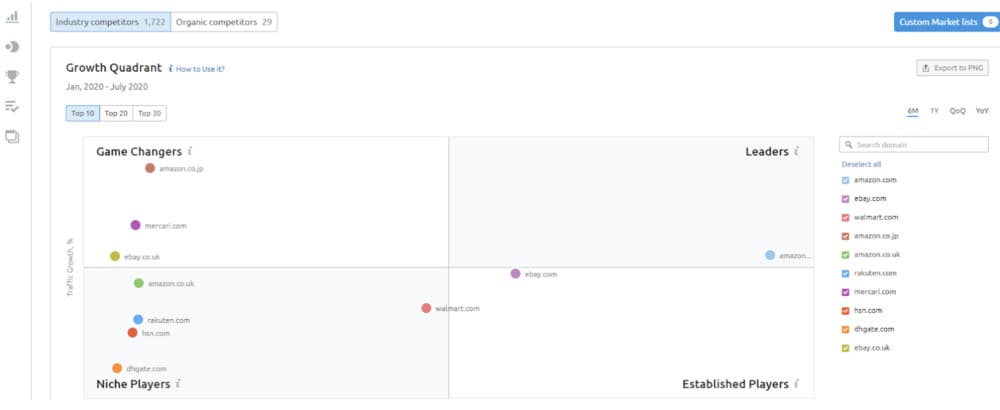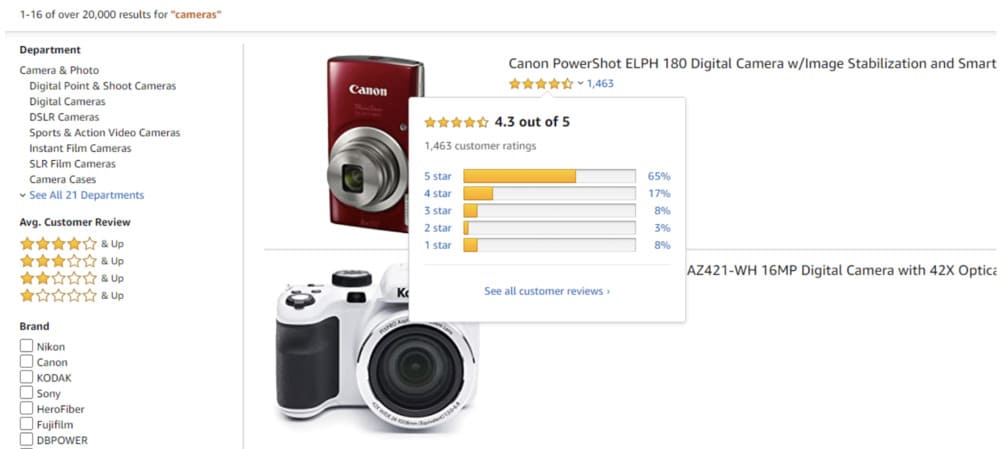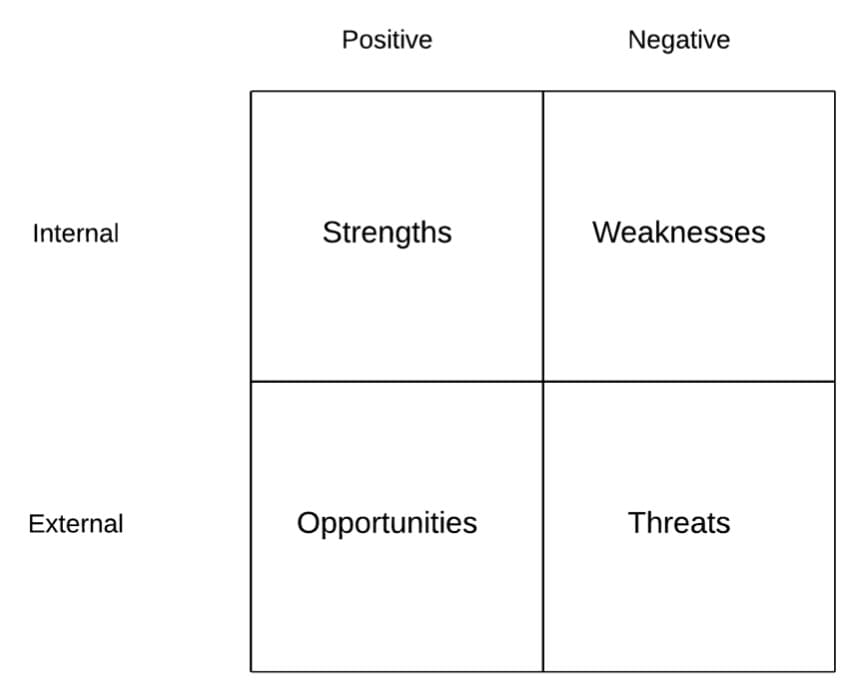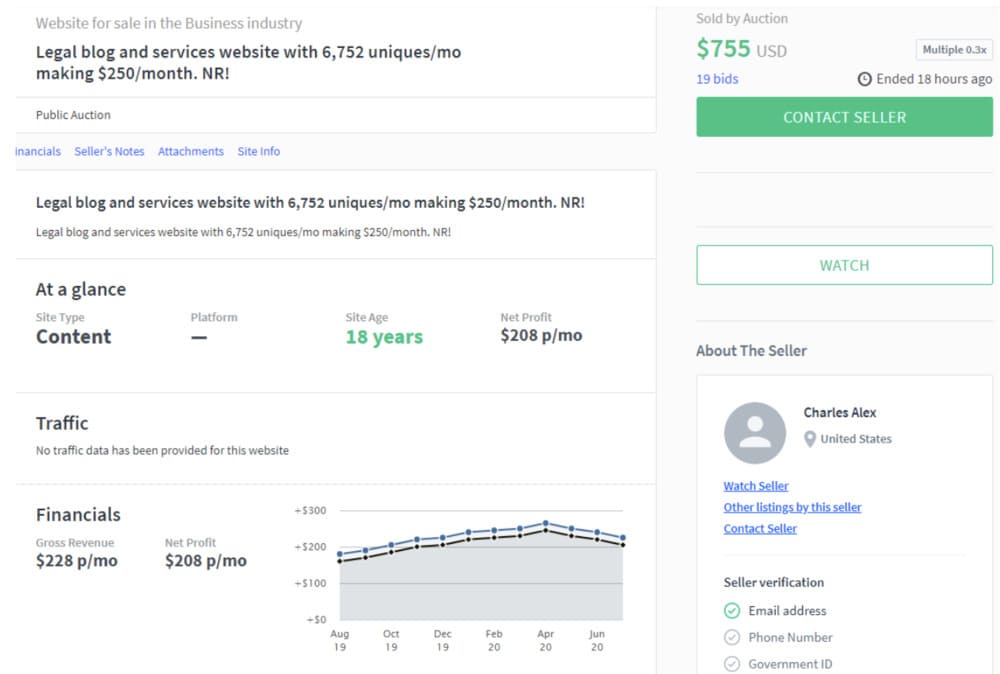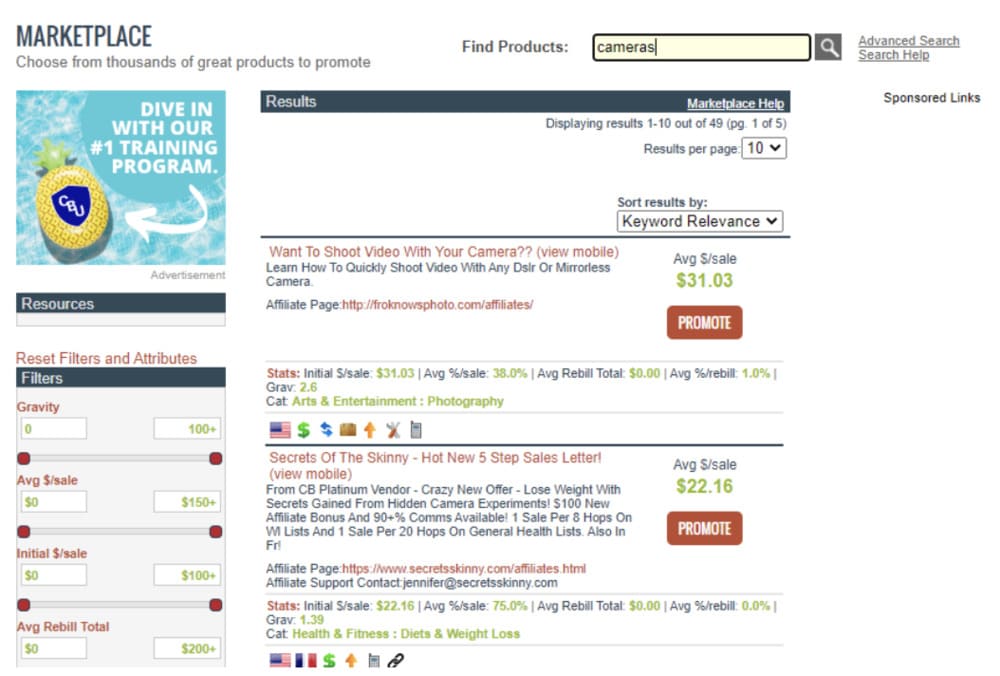So you’ve decided to start with niche marketing. Do you know where to start? Not sure of the next steps to find that perfect niche?
I have created a list with 10 step-by-step instructions that will help you find a profitable niche.
First of all, in order to generate the results you’re looking for, you need to know that targeting a specific group and solving their problems will take both time and money.
You’ll be spending some time researching and exploring the market. This guide will help you do just that.
What can you expect in this article?
After reading this article, you’ll know just how to find a profitable niche for your business.
Taking a step-by-step approach will help you view this challenge logically, qualitatively calculate the opportunities, better prepare for the risks, and ultimately reduce the chances of starting what could end as a flop.
Of course, with marketing, you’ll always be running a risk. This goes for niche marketing as well. You can have a good upside or a bad downside, but you can set things up to put yourself in the best position for the good.
Want a list of Affiliate Programs Organized By Niche?
Here are some of the best programs in:
Fitness | Insurance | Hosting | Education | Car & Auto | Crypto | Hotel | Dating | Music | Travel | Health/Wellness | Vegan | Books | Solar | Pays Daily | Golf | Christian | Cell Phone | Gaming |
The Good
The payoff for this is huge. You must have heard of niche marketers finding success in one form or another. The pattern with these success stories is that the business was able to dominate their niche.
Take Bonobos as an example. Bonobos is a company that started out with only one product: pants. Albeit, well-fitted men’s pants.
Bonobos founders Andy Dunn and Brian Spaly found out that a majority of men weren’t happy with their pants. Many complained that the off-the-rack pants bought at the store didn’t fit right.
To fix that problem, Bonobos launched its online store and reached $1 million in revenue in the first 6 months.
The company has since expanded its line of products; an expansion made it easier with a loyal customer base.
You’ll need to plan everything just right. A niche business done right listens to its audience and is rewarded with greater profits.
The Bad
On the opposite end, a badly planned niche venture will fail to make a profit.
Reasons for niche marketing failures are:
- Targeting a niche that’s too generic or too specific
- Missing problem-solution fit
- Impatient approach
- Skipping product testing (B2B) and user testing (B2C)
- Focusing too much on the product and not on the audience
So what should you be prioritizing? Well, profit. What I mean by this is looking at the long-term. Don’t expect easy money.
Good niche marketing business will revolve around the passion and skill sets of the people in the business. It will take you a minimum of 8-12 months to realize and reap the benefits.
Rules
As a quick guide, here are 3 Basic Rules for online niche marketing strategy:
- Neither too broad nor too narrow
- Invest in your website SEO and user engagement
- Listen to your audience
You don’t want to be too general for obvious reasons. That will give you too large an audience to adequately address issues or conversely, you don’t want to be too specific and limit yourself to narrow growth.
For example, avoid domain names like BestNikonProducts. You’d be attaching yourself to the product rather than the niche with a broader audience.
Here are a few prerequisites before you undertake this journey. Call it a checklist:
- Are you passionate about the niche?
- Do you have the expertise?
- Are you willing to invest time for at least 8 to12 months without profit?
If you can say that you fulfill these requirements, read on through for a step-by-step guide on finding your niche.
Finding your niche, a step-by-step guide
Step 1: Prioritize profit
Time to figure out who you want to sell to. Did you have a target audience in mind? How did you pick them?
There are multiple ways to figure this one out. Rather, there are multiple angles you can look at on this issue.
For example, use geography as a “filter”. Which country’s market do you want to tap into? Narrowing that further, which region has needs that you can address?
Worldwide growth of advertising spending, 2018-2021 (Regional)
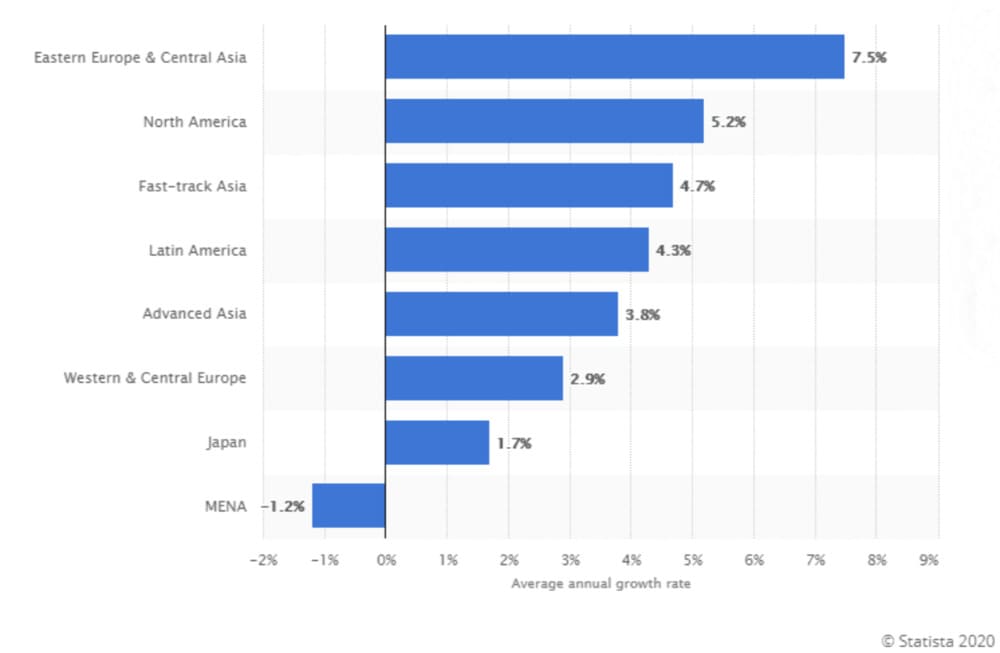
Take this graph as an example. This graph shows, by region, the worldwide advertising spending growth.
What this tells us is which region is a potential target audience and where businesses are willing to spend their advertising money.
This implies that their audience is willing and able to spend. Otherwise, these companies would be spending all their money on advertising with little return.
The point is to find a niche that will generate potential profit for your business. You’ll have to make sure that your chosen area will have the buying power needed to purchase your product or service.
Once you find that general niche, try going deeper. Remember what I said earlier about possible mistakes? It won’t do you any good if you target an audience that’s too general. Conversely, you’ll want to make sure that you aren’t being too specific with your audience.
Pro Tip: Don’t follow the hype
Tom Winter, Cofounder of DevSkiller
The worst thing you can do when choosing an online business niche is following the hype train without doing your own due diligence. You may notice many influencers rallying behind a certain niche, promising quick success, and racking up impressive numbers.
But know that this could actually be part of their plan and that they could be selling you a niche that isn’t what it’s all cracked up to be, ending up with your money in their pockets.
When choosing a niche, choose something that you are passionate about, have significant skill in, and a desire to learn to succeed with the business in the long run – not just because the niche is all the rage on your timeline or news feed.
Step 2. Find your target audience
The trick here is to find a niche that will yield quality leads and audience while not being too exclusive.
There’s an exercise for this.
Let’s take geography as our example again. Let’s say you chose the U.S. as your target country. Following that, here’s what you can do:
- What region of the U.S. would you be able to market your product to? West, East, South, or anything in between?
- Within that region, in which state(s) would you be most successful?
- After finding a state, figure out whether there is a specific city or county that you should target.
After following those steps, go back to each level and figure out where you would most likely succeed. Too narrow, and you’ll be limiting your business. Too broad, and you’ll find more competition than you bargained for.
You can take this exercise and apply different filters to it. You can consider age, sex, or income bracket. The point of the exercise is being able to narrow, or generalize, an audience.
Step 3: Identify your specialization
What do you have that you can monetize? Can you offer a product or service?
Since niche marketing takes time, it will help to ask yourself if you are passionate about something, or good at something, anything that will give you an advantage.
This ties in with Google’s core algorithm. With the Google core algorithm, people have noticed a large emphasis on E-A-T in site ranking.
E-A-T stands for Expertise-Authority-Trust. These three factors are weighted heavily when Google ranks websites. Being an expert in whatever you choose will help you gain that trust.
For a good rank, you’ll want to ensure that you can fulfill these requirements. Being an expert in your field will give you an early advantage. In this way, you can solve your customers’ problems more effectively.
Remember, you’re trying to help people solve problems with your business. If you can find a solution to those problems, people will listen to you. If your solution is good enough, people will pay you.
This way, you guarantee profits for your business.
Pro Tip: Choose Evergreen When Possible
Stacy Caprio, Founder of Accelerated Growth Marketing
One thing people get wrong when choosing a profitable niche is picking an area that is constantly evolving and has to be constantly updated. This includes niches such as news sites that have to put out new content day after day, sites for iPhones or any brand of technology that constantly comes out with new models and needs complete content updates after each new model debut, and it also includes trendy sites on topics that will be huge and then go away completely.
Try choosing an evergreen niche that will always be there, with content you can build on that won’t fade because a new trend or model comes along if you want to create a site that has profitability long-term.
Step 4. Find a solution to their problems
Imagine being your target audience for a minute. Would you rather trust someone who just tries to market a product or someone who sincerely cares about the product?
Along these lines, make sure you do your homework and know what you need to know. How can this help people get what they need?
Try making a list of everything you are interested in, passionate about, or at least have some background on. Also, write down common problems you hear about from your friends and family, and think of the problems you face yourself.
Do you see any patterns? This might help you think about what kind of everyday problems you can solve with your skillset.
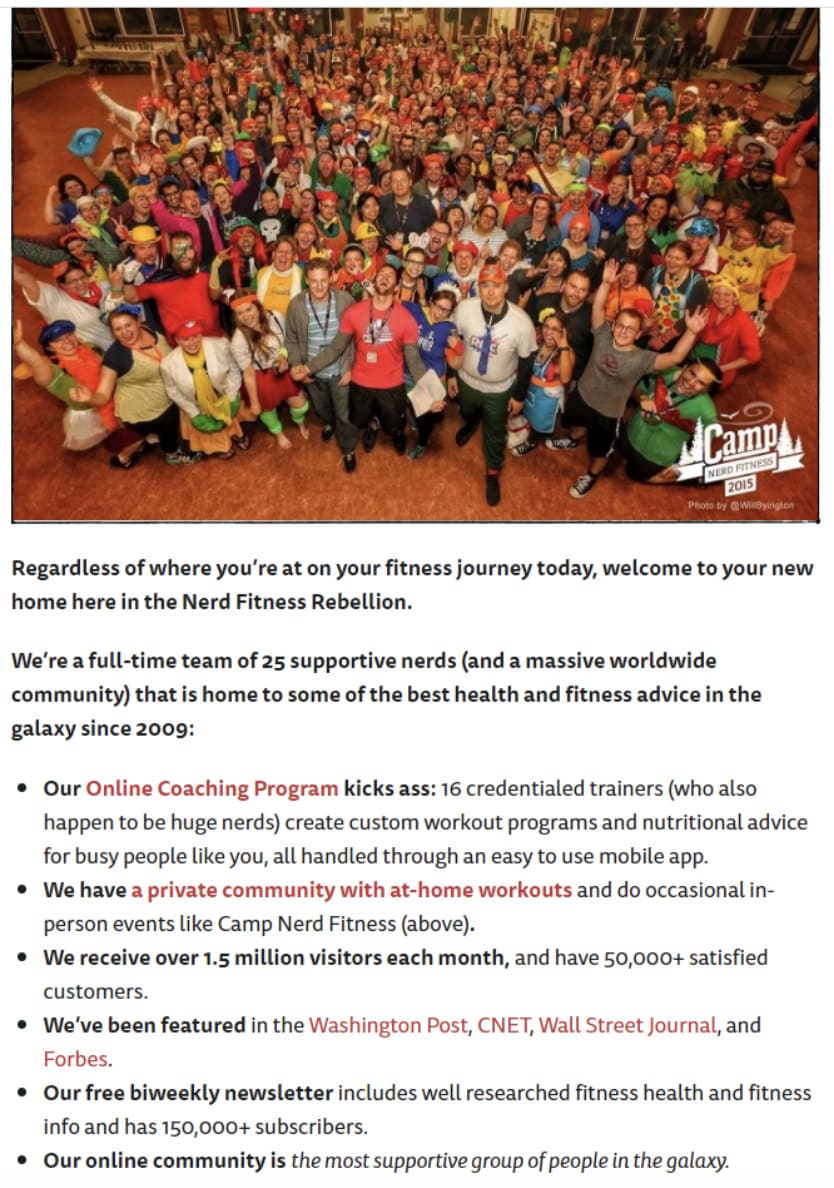
Take a look at the image above. This is a screenshot of the NerdFitness’ “About Us” page. You can see they have found a profitable niche.
The company didn’t insist on targeting the usual audience for a fitness program. Instead, they chose an audience that is stereotypically assumed to have poor fitness. In this sense, the business found a good niche to serve.
Once you understand better what solutions you can offer, you’ll have a clearer picture of your audience and what you can offer that works for them.
With this understanding, it’s time for you to learn more about your planned audience. For this, you should consider interviews.
Going back to our earlier example, try to find key informants in that area. These are individuals that could have valuable information for you.
Try to establish contact with them once you’ve confirmed this group. It would help if you prepare guide questions for your interview.
Some questions you can ask these Key Informants are:
- What are the common problems you face? How often?
- What solutions have you heard about or thought about?
- What workarounds have you done yourself?
- Are you willing to spend on the solution? If so, how much?
You can conduct your interviews through email if the distance is an issue. If not, it would be better if you can do a physical meet-up. This way, you can ask any follow-up questions should they arise.
Another way to do this would be through consultancy firms and CX Experts. These are professionals knowledgeable about a specific area of expertise. Their input can be a highly valuable source of information; however, it can be costly.
Clarity.fm is a website that connects experts and “callers” alike. For a fee, you can get on a call with experts in a field you wish to learn more about. It’s a relatively quick and easy method to gather information from people in the know.
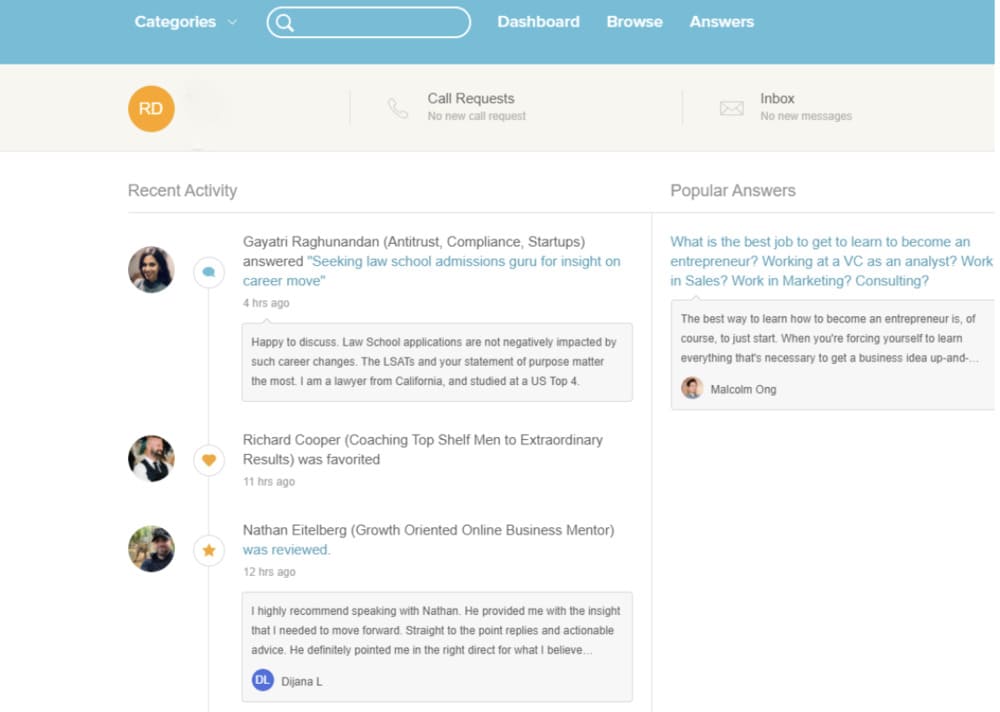
You can use this tool as a way to get an expert’s insights on your ideas. You might be spending about $100 for their insights but it’s a worthwhile investment in the long run.
Pro Tip: Have the confidence and take action
Mark Reynolds, ProfitReach
Are you passionate enough?
When choosing your niche, ask yourself, will you truly be passionate about it? Will you get behind it and put in the hard marketing yards, every week? Choose your niche, stick to your guns, stay on target and do the marketing activity needed for success.
Have the confidence and take action
Many entrepreneurs choose their niche but don’t promote it due to lack of confidence. Instead, it just sits there gathering dust. Get over it. It would be a serious mistake to come back in 2 years with regret, wishing you’d started today. Be confident and take action, before your competitors do.
Pro Tip: You Don’t Have To Be Passionate
Daniel Snow, founder of The Snow Agency
To thrive, you don’t have to be completely crazy about a niche. What counts is that you want and have some understanding of a niche that you’re interested in. It should be something that doesn’t depress you to death, because you’re going to need to focus on it for a lot of time.
Step 5: Opportunity identification
Time to do some data gathering over the web.
With what you found out in the previous steps and process, formulate keywords for your business. These keywords should be related to the problem, the solution you have, and the target audience.
You’ll want to make sure these keywords are helpful for your business and uptrending. Choosing the wrong keyword could mean your site doesn’t rank well as well as it should
For example, if you want something related to photography, you can compare keyword quality by comparing the words “cameras” and “photography”.
With keywords and trends, the ideal situation will be a high volume of searches with minimum competition and uptrending. I’ve compiled a few sites that can help you tackle this section.
ExplodingTopics
One online tool to help you would be Explodingtopics.com. This online tool allows you to look for rising trends. Try to figure out how your keyword has been performing.
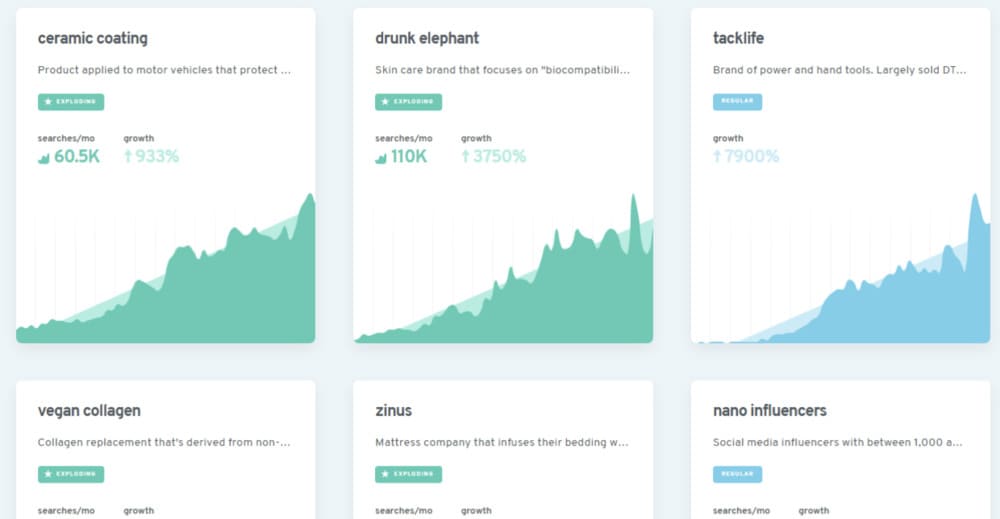
Pro Tip: Be careful of trends
Brian Robben, Robben Media
The number one mistake when choosing a niche is picking a hot trend. For example, I saw many entrepreneurs select fidget spinners, and now they’re irrelevant. The face mask niche is a more recent trend. While these can make you a lot of money in the short term, often, the squeeze is not worth the juice.
Treendly
Treendly is another tool that functions (and looks) like ExplodingTopics. The free version allows users to track one trend and view relevant charts. The website boasts of daily updates for their trend-charts so you can be sure each trend is “freshly” reviewed.
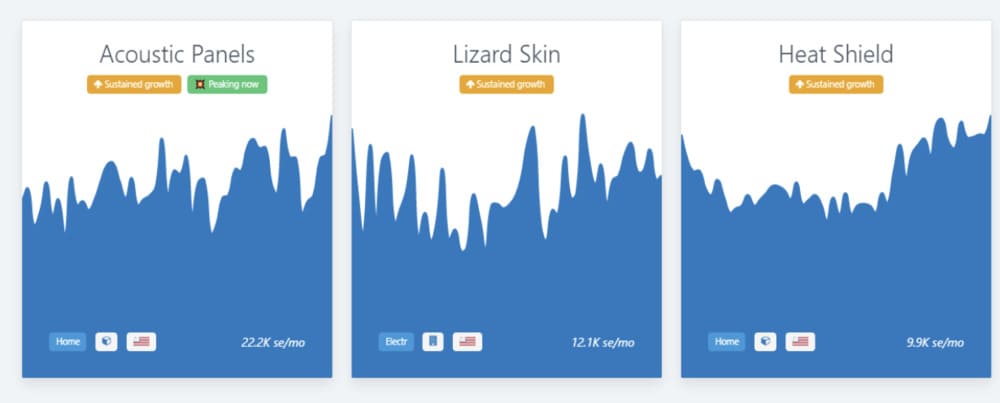
The site also has a dedicated section for post-coronavirus trends. This will help business owners who are looking for a way to get back in the game after the pandemic.
Trends Everywhere
Trends Everywhere is the most unique of these tools. It gives you the ability to see trends directly from your search engine. This is because it comes as a free extension on Google Chrome.

While it may not be as comprehensive as the others, it still makes an appearance here due to its ease of use. First time keyword searchers can have a go with this tool.
The con with this would be the limited data it gives you with their graphs. This makes this tool more of a supplemental, quick-search application.
Keyword tool
Keyword tool is another online search engine for keywords. It can give you the volume of traffic in a given region. Aside from that, the tool also gives you a rating on the competition you’re going to be up against.
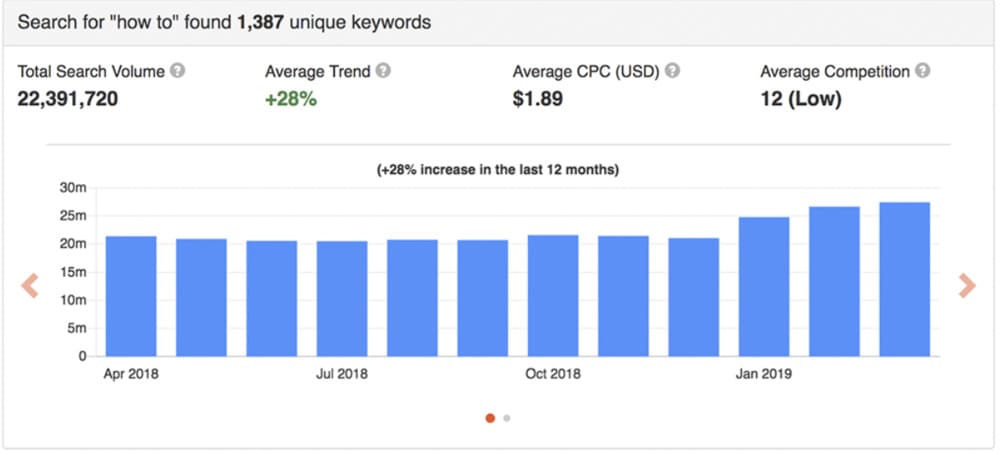
The tool can also give you the average of ad costs. This can tell the searcher how much people are spending on ads involving that keyword.
If there’s too much competition with a certain keyword, go narrower. Not enough? Try broadening the subject.
Pro Tip: How to recognize and choose a good niche
Petra Odak, CMO at Better Proposals
The biggest mistake you can do is going after something new and shiny after it’s been around and profitable for two months. You can go all in on a new niche, but be aware that it’s a gamble that may not pay off.
Kwfinder
Kwfinder is a tool that was developed to help find low competition keywords. With this tool, you can perform searches both on keywords or domains.
It’s my favorite keyword research tool at this time. It’s modern, fast, and makes it much easier to find keyword golden ratio terms. SAVE 10% by using my promo code, “nichesiteproject”.
See my demos here and here on YouTube.
From the main results page, you can easily find the:
- CPC
- Keyword difficulty
- Trend
- Search Volume
All these metrics are helpful in the long run. You’ll find a use for them in the following steps as well.
Pro Tip: Check the Competition
Tory Gray – CEO of The Gray Dot Company
A common mistake entrepreneurs make is failing to evaluate the competitive landscape before jumping into a business. Your one in a million idea may not be as special as you think and you may enter a market that is already oversaturated.
That doesn’t mean you can’t pursue niches that are highly competitive. A keyword gap comparison will help you identify which search terms your competitors rank for and which search terms you should target.
Step 6. Competition analysis
Now you should have an idea of who you want to target, what you’re good at, quantitative data on the demand and how to put them together.
We’ve also gone through the tools that can help you figure out what keywords to use while marketing online.
Now, it’s time to learn more about who you’ll be competing with. This is important. You have to know what your competitors have that you don’t, and vice versa.
Google Search Volume
With your chosen keywords, do a quick search on Google. Take note of the total number of results and the top results.
You can determine just how popular a topic is based on the number of results.
The higher the number is, the more businesses are invested in that topic. You can expect a lot of competition with those kinds of keywords.
Look at sites that are ranking on page 1 in Google. They are your potential competitors.
SEMrush
You can use a tool like SEMrush. This tool is often lauded as one of the best when it comes to SEO. We can make use of it here with our strategizing.
SEMrush can figure out who top competitors for a website and how they’re doing. This is valuable information for your market strategy.
With this data, you can figure out where the gaps might be and any weak points in your competition.
Amazon.com
Yup, Amazon can come in handy too. You know those reviews you see when you search for a product? Turns out that those reviews are a good indicator of profitability as well.
Keep an eye on the number of product results you get. You can see those at the top left of the page.
The number of total products can tell you just how many businesses are selling the item. Another thing to pay attention to would be the number of reviews on an item.
You can get a reading on the number of people that have paid for the product and from where it was purchased.
Similarly, eBay could give you another perspective on those metrics. Taking both of these into account gives a clear indication of the level of interest in a product; just how in-demand it is, and the level of competition you’ll be up against.
Pro Tip: Don’t settle for just what you love. Go for passion AND profits!
Nikola Roza, SEO for the Poor and Determined
One big mistake people make with niche selection is that they pick based on their passion only. They’ve heard that you can’t fail if you do what you love and never give up, and assume they’ll succeed for sure.
Whereas, it’s possible to choose what you love and make a wrong choice. Niche too broad, niche too narrow, no one’s buying what you selling…
Possibilities to mess up are vast and the solution is the find a niche that’s at the intersection of passion and profitability. It takes some time to uncover one, but it’s so worth it.
Step 7. SWOT analysis
After compiling all your data, plot what you know on a SWOT Chart. These include all the niches you may have picked beforehand.
Here’s a quick guide on how to fill this thing up:
- Strength – Expertise or passion, what we found out in Step 3
- Weaknesses – Problems you found from Step 4, constraints from Step 2
- Opportunities – Findings from Step 1 & 5; Potential profit if you become market leader
- Threats – Competitions you found in Step 6
Using a chart like the one above will help guide your next steps. It helps when you can visualize your data in an organized manner.
Based on this visualization, you must be able to pick 2 to 3 niches that you think are the best fit.
Step 8: Validation
Now it’s time to validate your findings. Validation means confirming what you think you already know about your target audience.
In this step, you’ll be confirming your solution by talking directly to your audience. Get creative with how you establish contact.
Flippa
Flippa is an auctioning site where people sell their domains. The great thing about it is you can also see what sites have already been sold.
This works perfectly for your planning. Right off the bat this site gives you details about what’s on the site, how old it is, and how profitable it is.
You can write these down and compare them with similar sites in their niche. This way, you can evaluate the profitability for each of your prospective niches.
Clickbank
Clickbank is another auctioning site which has an added bonus for your research. This site makes use of a metric called Gravity. Gravity, or Grav, tells you how many people made money promoting that product.
Use this indicator to support your previous findings. You can search for your intended niche and apply the filter that arranges the results by their Gravity.
The higher the gravity, the more potential profit in that niche.
Take a look at the number of total results as well. As we mentioned before, this shows you just how interested companies are in selling that same item.
Forums and Social Media
In this step, you’ll be confirming your solution by talking directly to your audience. Get creative with how you establish contact.
The most inexpensive way would be through forums. With online forums, you get an inexpensive route to your audience. The problem with this would be the amount of time spent on this project.
Forums give you direct access to potential customers. This is because forums tend to focus on a specific topic. Try to find one that fits your audience.
It will depend on the traffic of the forum you’re participating in. You might have to wait a little while to get an adequate number of responses.
You can also search through social media. With social media, you have a varied group of people talking about different subjects. Try to find a subset of that group that is interested in your idea.
Try to figure out how people feel about it through their posts and their online behavior. You can also establish contact with them directly through their social media accounts.
The main factor is getting enough responses to certify that your solution is credible.
Step 9: Testing
You should also ready the landing page that people will be ending up on. You can use this in conjunction with an analytics tool.
You can try running a Google ad for the landing page. Typically, you can expect to spend around $100 dollars on this. With this you can figure out how interested people are based on the number of clicks you get and engagement in that landing page.
Similarly, Facebook ads can do as much for you. Facebook has a tool that allows you to view the insights on the interaction you get from your ads.
This will tell you how often people end up on that page and whether they navigate through your site afterward. These are the ways to test your niches.
Figure out if people are spending money in that niche. Remember, we want a niche with purchasing power. It won’t really do you any good if people are interested but have no intention to pay.
Step 10: ROI risk assessment
As I mentioned at the beginning of this article, you’ll have to be prepared to invest some money in this venture.
This final step is all about risk assessment for your investment; what you’re spending in time and money versus the profitability and probability of success.
If you have a PMP background like me, this doesn’t need an explanation. If you don’t, this is what our risk assessment will look like:
In simple terms, probability in this table is the likelihood of your business making a profit. Impact is the loss in time and money that would incur if things go wrong.
You must be able to fill in this table based on all the inputs that you have already gathered.
It is always recommended to stay away from a High-Risk niche.
You can take a calculated risk based on a quantitative risk assessment on investment and profit probability.
You need to invest in things like CX research, expert consultation, validating and testing your niche from ads, landing page, and marketing your website to reach potential target audiences.
In a 2020 link building survey by Linkdoctor.io, 74.3% of SEO professionals said that they spent on average $2500 or less monthly on link building. This is interesting considering how 79.05% of those respondents found link building to be effective in their SEO.
So plan your investment well in advance to include calculated risk. Have a minimum 20% buffer to cover surprise expenses.
Conclusion
At the end of the day, niche marketing is a long-term project. You’ll have to remind yourself that it takes time, even after the implementation of your strategy. It could take weeks, months, maybe even a year.
The quality of your leads will provide a great upside. These will be customers who will give you their loyalty for listening to them, for giving them exactly what they want.
Be proactive with your strategy and learn to adapt. Throughout the process, you’ll notice that every step requires gathering data in one form or another from target individuals. This is because as you are targeting a group, you’ll need to listen to that group.
The bottom line: it’s going to be a long but fulfilling ride. Play smart, act smart, and keep an eye on the long-term benefits of your strategy.
